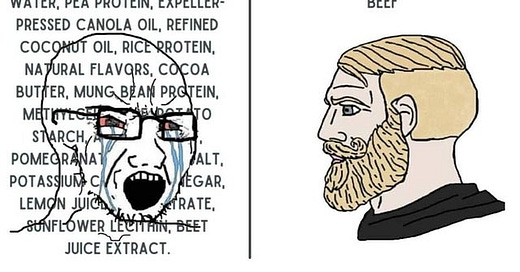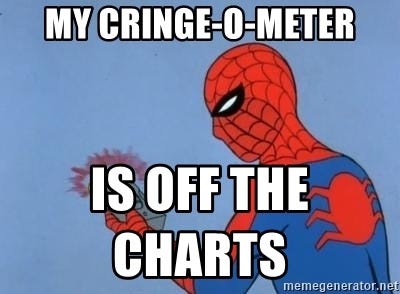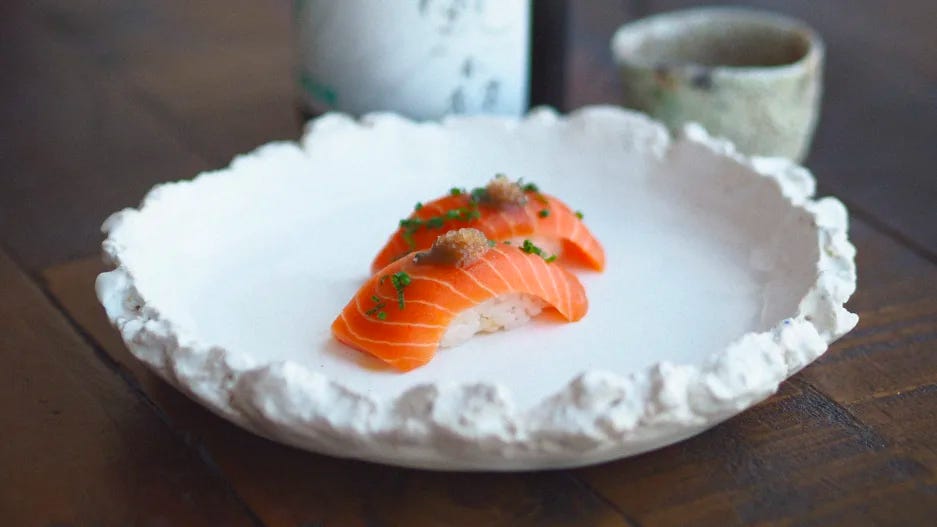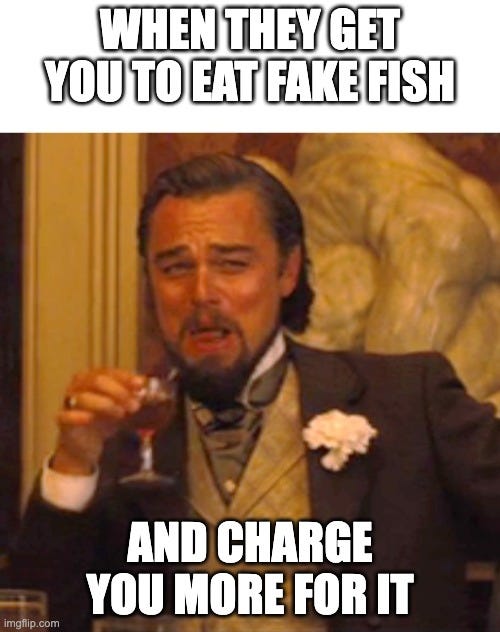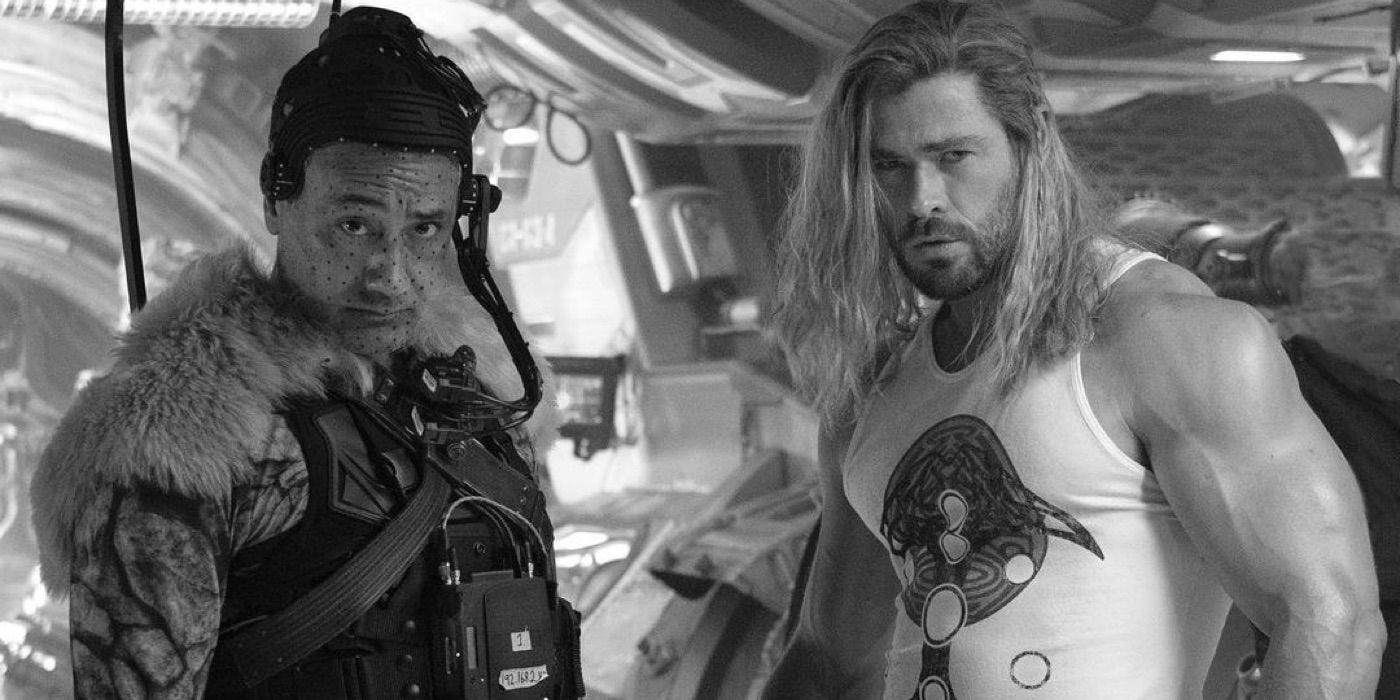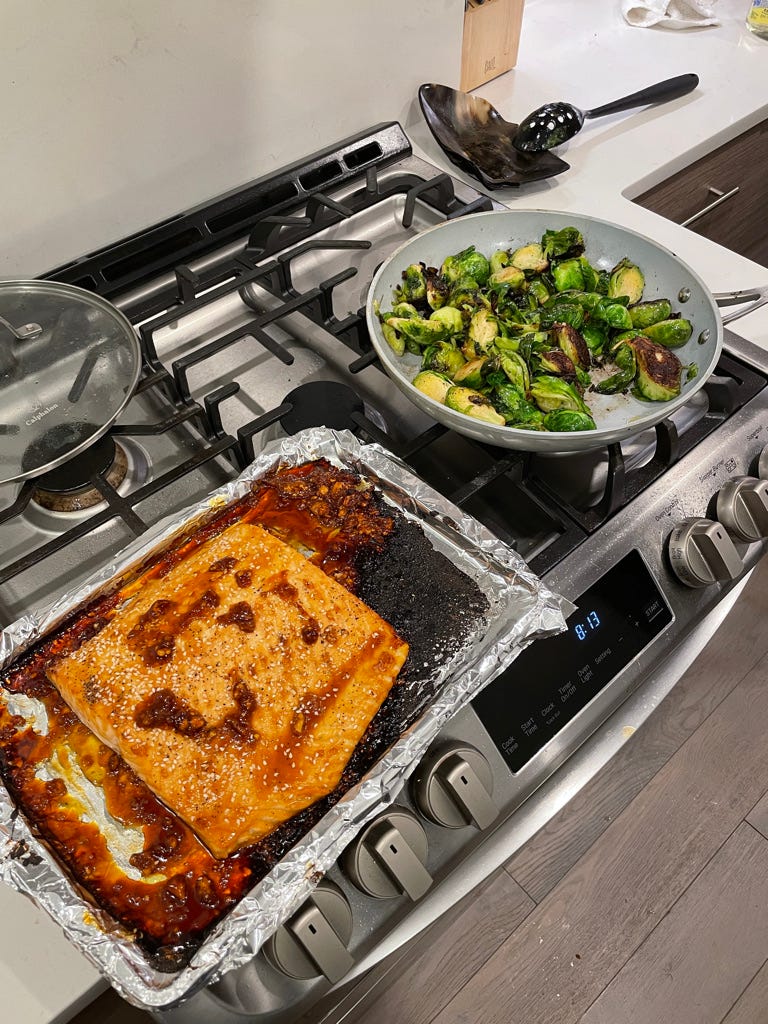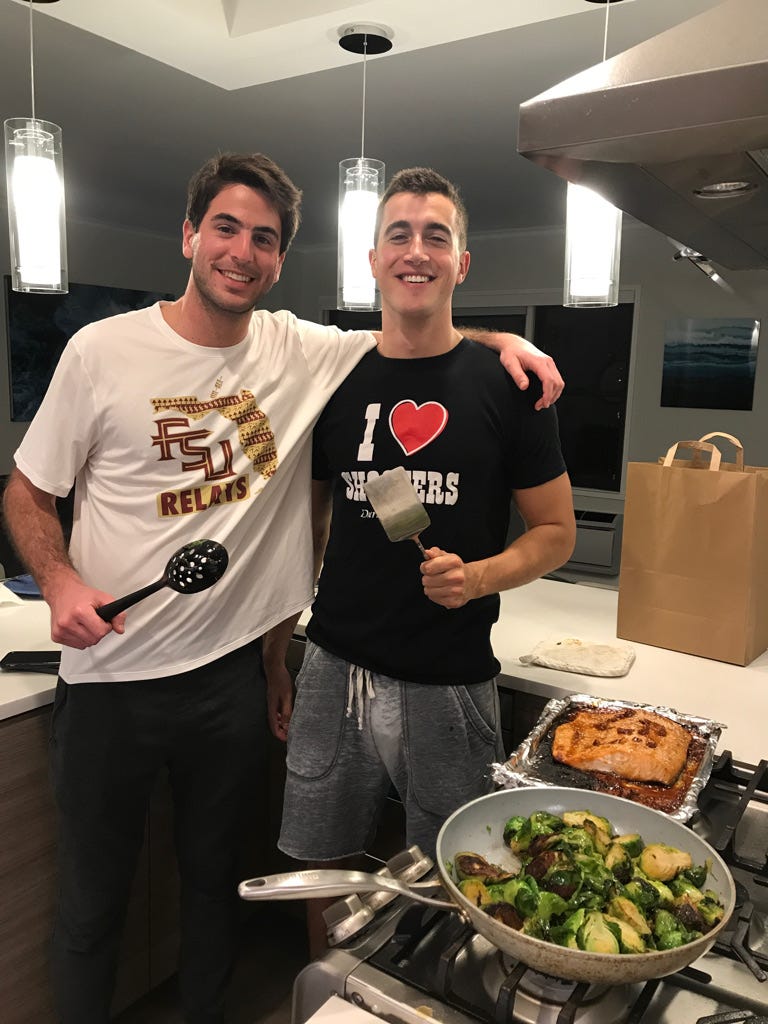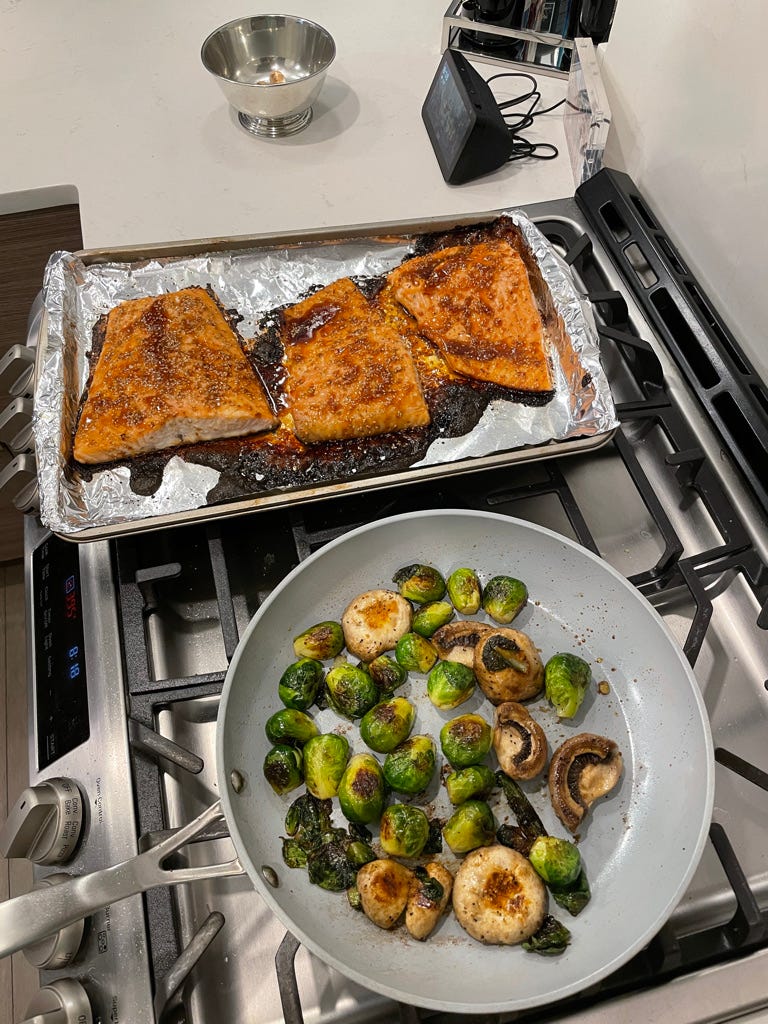When I was getting over my first girlfriend one of my friends said to me,
There are plenty of fish in the sea
Had to make the joke, sorry guys…
In the relationship sense, this is true. We are approaching a global population of 8.5 billion people. Though it did not lessen the pain...
But unfortunately in the literal sense, as in actual fish in our oceans, there are no longer, “plenty of fish in the sea”. Overfishing and the environmental impact of human activity have brought fish populations to a fraction of what they once were.
The founders of Wildtype, use the quote above in their Series B fundraising announcement and it is hilarious.
The last few years have seen an explosion of meat alternatives.
Due to climate concerns and sustainability as well as animal welfare and personal health benefits, many have explored the possibilities of meat alternatives.
Companies like Impossible Foods, Kellog’s (thru MorningStar Farms and Incogmeato), Nestle (thru Sweet Earth), Eat JUST, and more all have their various rendition of meat alternatives. The popularity and growth of these products have landed many of them in American establishments like Burger King, Dunkin’ Donuts, Starbucks, and Walmart nationwide.
We’ve seen this as consumers as U.S. retail sales of plant-based foods grew 27% in 2020, bringing the total market to roughly $7 billion, according to data from the Plant-Based Foods Association (PBFA) and the Good Food Institute (GFI). The global market is forecasted to grow to $450 billion by 2040, according to consulting firm AT Kearney, which would represent roughly a quarter of the broader $1.8 trillion meat market.
Where meat (and meat-based alternatives) has received a ton of attention in recent years since the problems associated with it have been well-documented, seafood has been much less publicized. Seafood alternatives have not popped up as rapidly because put simply, regular-way seafood is seen as healthy and has a positive consumer outlook! Additionally, seafood is more difficult to replicate than beef, poultry, or pork. But with recent concerns over the environment, child labor, overfishing, and mislabeling as brought to light by SeaSpiracy, microplastics found in human blood for the first time, and increased consumer appetite for healthier and more sustainable food options, seafood alternatives are receiving more and more venture and corporate dollars.
Some examples of seafood being the next investing trend in Big Food:
Tyson invested in plant-based shellfish company New Wave Foods, a seaweed-based shrimp alternative.
Nestle launched Vuna, a plant-based tuna alternative.
Thai Union Group owns Chicken of the Sea which makes plant-based fish, crab, and shrimp.
Despite all the attention though, plant-based alternatives to seafood do not have the same health benefits that make real, true seafood such a welcome addition to any diet. For this reason and more, companies in the cell cultivated seafood space are finally getting their moment in the lime-light.
One of them, Wildtype, we will look at today!
Wildtype is a 6-year-old SF-based company that has been developing cell-cultured salmon. Cell-cultured salmon reduces the reliance on wild fishing and fish farming. They raised $100MM in Series B funding to help scale production and increase their distribution to restaurants and grocery stores in the States. Existing investors include CRV, Maven Ventures, Spark Capital, and Root Ventures. New investors included L Catterton, Cargill, Leonardo DiCaprio, Bezos Expeditions, Temasek, and Robert Downey Jr.’s FootPrint Coalition (among others). Might need to talk about increased celebrity investing in the venture space in another post…
Cell-cultivated seafood exhibits many benefits. Firstly, it protects wild species and the environmental issues of overfishing, pollution, and damage associated with it. Secondly, it provides the same nutritional benefits as real fish but without mercury, microplastics, antibiotics, and other contaminants that sometimes appear in wild and farmed fish. With the same nutritional content as real fish and engineered to have a more similar taste / texture profile, this makes it a clear winner over plant-based fish.
The Wildtype process starts with steel tanks, bioreactors, that look like brewery tanks, where scientists plant stem cells of Pacific Salmon (AKA Coho salmon). These cells are carefully placed into plant-derived 3D scaffoldings that guide the cells to shape into the precise cut of each type of fish. Cofounder Aryé Elfenbein, says of the salmon derived cells:
“The cells we use are really programmed, it’s in their DNA, to organize and mature in the same way that they would within the animal,” says Elfenbein. “We provide them with the same nutrients that the fish would consume in the wild—proteins and fats and carbohydrates and minerals. And essentially have them grow in a system that looks kind of like a beer brewery.”
Wildtype grows the salmon cells into only the edible cuts of the fish. By doing this, it reduces the time spent and food waste of having to cut away inedible parts present in real fish. Wildtype has cited that the full growth process takes 4-6 weeks and can not be sped up with current technology. It plans to invest heavily to improve its nutrient mix that it “feeds” the cells and thus drive down the cost to produce. In recent months, Wildtype has announced partnerships at Pokeworks, Snowfox, and more, paving the way for mass consumer exposure to the new fish substitute. It is important to note that Wildtype is still awaiting FDA approval to sell thru restaurants.
The question is, will consumers embrace pseudo-seafood (and cell-cultured seafood) with the same or more passion as plant-based meat?
I personally have a hard time getting behind plant-based food alternatives. I am stubborn in my ways sure, but don’t find myself interested in the benefits or ethical/moral drivers. However, I have been curious to see how the development of this space pans out and I totally support the cause. It might be a longer road to mass scale and adoption than society had originally thought. There was a time when forecasts had predicted that plant-based would replace animal protein entirely, but growth is slowing and is not as fast as the meat category as a whole. Additionally, plant-based meat faces some obstacles in proper labeling of products as not “true meat”, overseas adoption, nutritional challenges (it isn’t always healthier than the meat it imitates!), higher cost of production than real meat and thus higher prices, and more.
The good news is, that cell-cultured and plant-based seafood will be able to learn from the mistakes and shortcomings of meat alternatives. Additionally, grocery stores will have had time to figure out how to most effectively display these products, an issue in recent years.
There is also some intense competition within the space as companies gear up to face off for consumer dollars. BlueNalu is working on cultured bluefin tuna toro as its first cultured seafood item, Gathered Foods is working on single-serve, ready-to-eat pouches of plant-based tuna. Finless Foods, has created plant-based and cell-cultured tuna and raised a Series B of $34MMM on March 10, 2022. Shiok Meats is a Singaporean-based company that produces shrimps, crabs, and lobsters using cellular agriculture and plans to commercialize in 2023. Just last week, Upside Foods, a startup that produces cell-cultured meat and seafood raised $400MM, representing the largest ever raise in the space to date.
The big factor to consider other than consumer adoption and acceptance is the ability to scale. Chicken, steak, pork, and other meat staples are affordable because there is a massive supply and production chain in place that allows economies of scale to drive down the price. These companies are raising money to build bigger factories, larger and more efficient bioreactors, and improve the nutrient mix fed to cell cultures to help reduce the cost to produce one unit of the end product, seafood. How long it takes, how much funding is needed, and consumer acceptance (which I expect to be a smaller issue) are what drive the risk profile here.
This post hits close to home for me.
One of my group chats with my friends is literally called Saleeemoane (a spoof on “Salmon”, duh). At the end of a weekend, we get all the guys together and cook a nice big teriyaki salmon, vegetables, and rice for everyone to chow down on together. We intentionally hyperbolize the effects of eating such a nutritious meal on a Sunday - A good salmon can heal wounds, undo hangovers, improve your IQ instantly, and enable you to have biceps the size of Chris Hemsworth’s… you get the point. Some of the guys will go to the grocery store and intentionally buy more salmon than we could even eat because they believe there is a linear relationship between the amount consumed and the effects seen. This post is a shoutout to the Sunday Salmon lads.
I genuinely love seafood and hope these companies can help us keep our oceans clean, improve wildlife ecosystems, and produce clean seafood without harming animals! Enjoy some photos of my Sunday Salmons below:
GW

